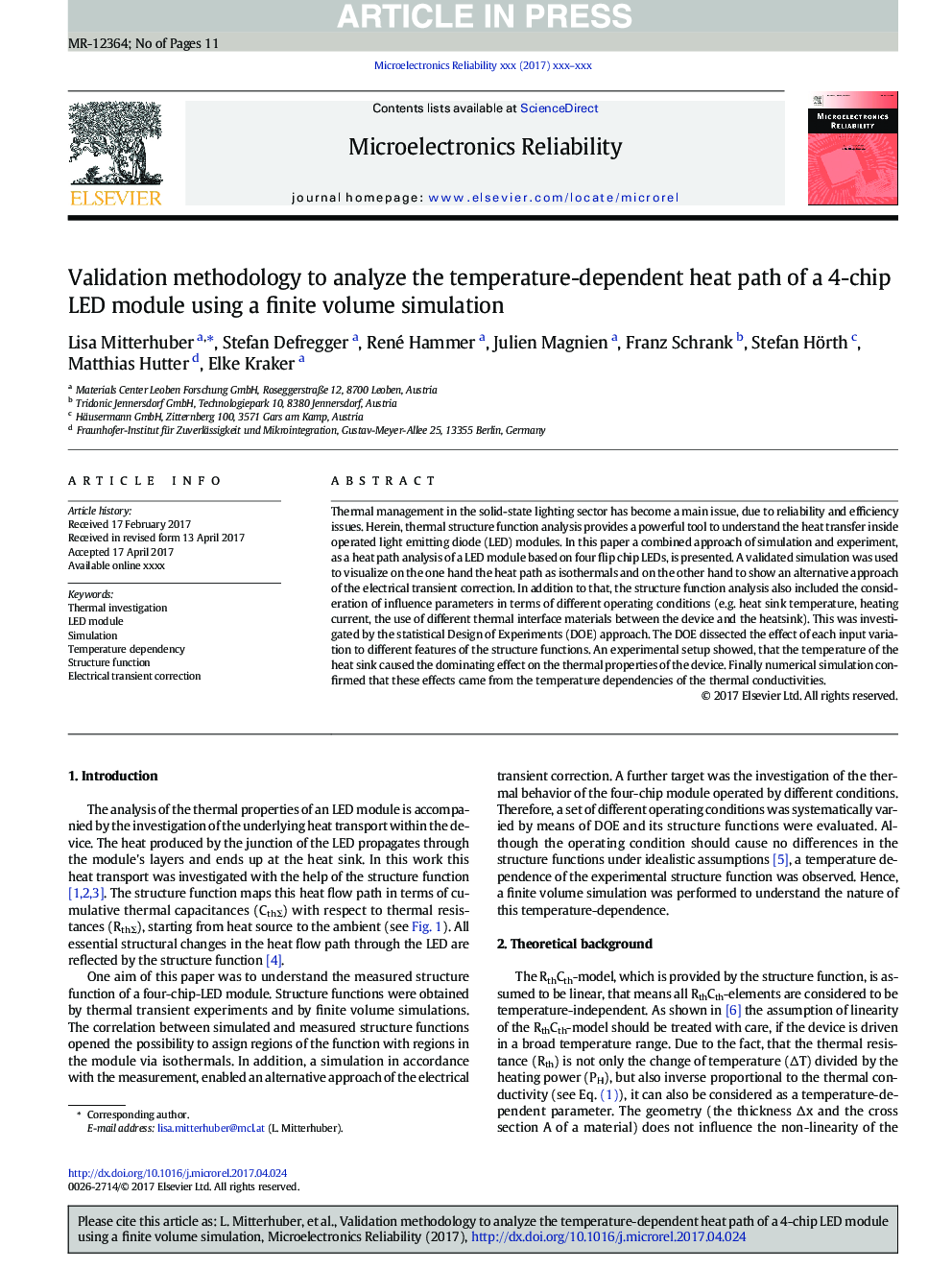| Article ID | Journal | Published Year | Pages | File Type |
|---|---|---|---|---|
| 6946180 | Microelectronics Reliability | 2017 | 11 Pages |
Abstract
Thermal management in the solid-state lighting sector has become a main issue, due to reliability and efficiency issues. Herein, thermal structure function analysis provides a powerful tool to understand the heat transfer inside operated light emitting diode (LED) modules. In this paper a combined approach of simulation and experiment, as a heat path analysis of a LED module based on four flip chip LEDs, is presented. A validated simulation was used to visualize on the one hand the heat path as isothermals and on the other hand to show an alternative approach of the electrical transient correction. In addition to that, the structure function analysis also included the consideration of influence parameters in terms of different operating conditions (e.g. heat sink temperature, heating current, the use of different thermal interface materials between the device and the heatsink). This was investigated by the statistical Design of Experiments (DOE) approach. The DOE dissected the effect of each input variation to different features of the structure functions. An experimental setup showed, that the temperature of the heat sink caused the dominating effect on the thermal properties of the device. Finally numerical simulation confirmed that these effects came from the temperature dependencies of the thermal conductivities.
Related Topics
Physical Sciences and Engineering
Computer Science
Hardware and Architecture
Authors
Lisa Mitterhuber, Stefan Defregger, René Hammer, Julien Magnien, Franz Schrank, Stefan Hörth, Matthias Hutter, Elke Kraker,
